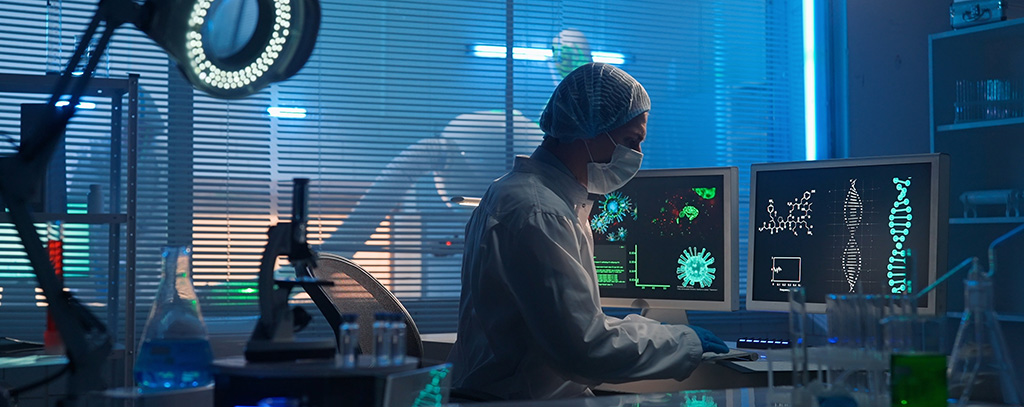


What is a 9 Panel Drug Test? Comprehensive Guide for Employers
July 30, 2023


Understanding the 9 Panel Drug Test: Detection and Analysis
July 31, 2023This advanced assessment is set up to spot an extensive variety of drugs, both legitimate and unlawful, in somebody's framework. By implementing a 9-panel urine drug test program, companies can take proactive steps towards ensuring workplace safety and efficiency.
In this blog post, we will delve into the inner workings of these tests – from their purpose and benefits across various industries to alternative testing methods available for different situations. We'll also discuss specimen collection procedures that ensure accurate results while adhering to strict guidelines.
As you continue reading, you'll gain insights into turnaround times for sample storage as well as how to interpret test results in relation to associated diseases. Furthermore, we'll explore confirmatory testing measures that address false positives or negatives in initial screenings.
Last but not least, maintaining compliance with medical coding information is crucial; therefore, we'll provide resources for staying informed on CPT codes and billing practices related to 9-panel urine drug tests.
Table of contents
- 9-Panel Urine Drug Test Overview: A Comprehensive Screening Tool
- Alternative Testing Methods: Choose What's Best for Your Organization
- Turnaround Times and Sample Storage: Ensuring Accurate Results
- Interpreting Results and Associated Diseases
- Confirmatory Testing Measures: A Crucial Step in Drug Screening
- Medical Coding Information Compliance: Staying Informed and Accurate
- FAQs in Relation to 9 Panel Urine Drug Test
- Conclusion
9-Panel Urine Drug Test Overview: A Comprehensive Screening Tool
Hey there, let's dive into the details of the 9-panel urine drug test, a popular screening tool for companies that prioritize a safe and productive work environment.
So, what exactly does this test entail?
Enzyme Multiplied Immunoassay Technique (EMIT): The Science Behind 9-Panel Urine Drug Tests
Let's explore the science behind 9-panel urine drug tests, shall we?
The 9-panel urine drug test employs a method called Enzyme Multiplied Immunoassay Technique (EMIT), which is quite fascinating, if you ask me.
But how does it work, you may wonder?
How EMIT Works in Detecting Drugs
In simple terms, EMIT uses antibodies to detect specific drugs or their metabolites within a urine sample. It's pretty cool, right? But wait, there's more. This technique is not only cost-effective but also highly sensitive and reliable for preliminary analytical test results.
Limitations Associated with EMIT-Based Tests
However, like any superhero with its kryptonite, EMIT has some limitations too. For instance, it cannot differentiate between delta-8 and delta-9 forms of THC or their metabolites. This can lead to false positives or negatives depending on the substance being tested.
No worries though. Confirmatory tests, like GC-MS, can be utilized to clear up any uncertainty caused by the inconclusive results from initial screenings. Though EMIT is a useful technique for drug testing, it's important to understand its constraints and take the proper steps to guarantee precise outcomes. After all, knowledge is power.
Alternative Testing Methods: Choose What's Best for Your Organization
Before you commit to the 9-panel urine drug test, it's crucial to consider if other testing methods might better suit your organization.
For instance, some employers prefer hair follicle tests, which offer longer detection windows compared to urine-based screenings.
Hair Follicle Testing Advantages
Hair follicle tests can detect drug use within a more extended period (up to 90 days) and are less susceptible to tampering than urine samples.
This method also provides a comprehensive overview of an individual's substance abuse history, making it ideal for pre-employment screening or periodic employee evaluations.
Factors Influencing Choice Between Different Testing Methods
Your choice between various testing methods should be based on factors such as industry requirements, detection window needs, and budget constraints.
Saliva tests, for example, provide rapid results but may not be suitable for detecting certain substances or long-term usage patterns.
In conclusion, it's essential to evaluate all available drug testing options before deciding on the most suitable one for your organization.
Weighing things like detection times, budgetary limitations, and sector regulations can help you to make an educated selection that best caters to your business's requirements.
Turnaround Times and Sample Storage: Ensuring Accurate Results
So, you've collected the urine samples for your 9-panel drug test.
What's next?
Step #1: Understand that turnaround times can vary depending on factors like lab workload and sample quality.
Step #2: Be patient. Your results may take anywhere from one week to a month when stored under ambient conditions.
Halux Diagnostics, for instance, provides accurate timeframes based on storage methods used.
Bonus Tip: Refrigerated samples last approximately one month while frozen specimens maintain viability during the same timeframe.
Factors Affecting Turnaround Times
- Promptly sending off samples to the laboratory after collection is crucial in ensuring timely results.
- Laboratory workload - peak seasons or holidays might cause delays.
- The complexity of testing required - some substances need more extensive analysis than others.
Best Practices for Sample Storage
- Avoid exposure to extreme temperatures or direct sunlight which could compromise sample integrity.
- If refrigeration isn't an option, consider freezing as it maintains specimen viability longer than room temperature storage does.
- Tightly seal containers with proper labeling before storing them away safely until they're ready for shipment to labs. This ensures no mix-ups occur during transportation or processing stages at laboratories later on down the line.
Remember, keeping these pointers in mind will help ensure accurate and timely results for your 9-panel urine drug tests. Happy testing.
Interpreting Results and Associated Diseases
Alright, let's dive in.
To make the most out of your 9-panel urine drug test results, it's essential to understand what constitutes normal ranges and expected values.
This will help you better comprehend any potential consequences tied to positive or negative findings.
The good news is that Halux Diagnostics has got you covered.
Not only provides detailed explanations about each test but also offers recommendations on interpreting results, understanding associated diseases and conditions, as well as outlining potential patient outcomes based on detected substances.
Understanding Normal Ranges in Drug Testing
In order to interpret the results accurately, it's crucial to be aware of the normal ranges for each specific substance tested within a given sample.
Different drugs have different thresholds for detection; knowing these levels can help determine if an individual may be abusing substances or using prescription medications appropriately.
Potential Consequences of Positive or Negative Results
A positive result could indicate substance abuse issues which might require further investigation or intervention by employers - such as counseling sessions or even termination depending on company policies.
Negative findings don't necessarily mean everything is fine either - false negatives can occur due to various factors affecting individual samples.
In both cases, confirmatory testing measures are strongly advised before taking any definitive action against employees or job candidates.
Eager for more information? Check out SAMHSA's guidelines on drug testing in the workplace.
Now you can possess the capacity to take action wisely and guarantee a secure, successful workspace for all with this newfound understanding.
Confirmatory Testing Measures: A Crucial Step in Drug Screening
The 9-panel urine drug test is a fantastic screening tool, but it's not perfect.
Although initial screenings may yield false positives or negatives, confirmatory testing helps ensure the accuracy of any decisions made based on these results.
This is where confirmatory testing comes into play.
The Reasons Behind False Positives/Negatives in Initial Screenings
Various factors can affect individual samples, leading to false positive or negative results.
Cross-reactivity with other substances, specimen contamination, or even improper storage conditions could be culprits behind these inaccuracies.
Types of Confirmatory Tests Available
- Gas Chromatography-Mass Spectrometry (GC-MS): A highly accurate method that separates and identifies compounds within a sample using mass spectrometry. It's considered the gold standard for confirmatory testing.
- Liquid Chromatography-Tandem Mass Spectrometry (LC-MS/MS): An alternative technique that provides high sensitivity and specificity by combining liquid chromatography with tandem mass spectrometry analysis. This method is also widely accepted as reliable for confirming preliminary analytical test results.
In short,
If you encounter a positive result from your 9-panel urine drug test, don't jump to conclusions just yet.
Make sure you follow up with confirmatory testing to ensure the accuracy of your findings and avoid any unnecessary actions against employees or job candidates.
Want more information on drug testing procedures? Check out this resource from SAMHSA for a comprehensive guide.
Medical Coding Information Compliance: Staying Informed and Accurate
Let's face it, medical coding can be a headache.
But worry not. We're here to help you navigate the complexities of accurate billing practices when using 9-panel urine drug tests in your organization.
First things first:
- The importance of accuracy: Keeping up with relevant medical coding information is crucial for maintaining compliance and avoiding costly errors.
- A valuable resource: ARUP's Laboratory Test Directory provides American Medical Association Current Procedural Terminology (CPT) codes strictly for informational purposes. However, don't solely rely on this directory - always consult your Medicare administrative contractor.
Moving forward, let's dive into some actionable tips to stay informed on CPT codes and billing practices:
- Become best friends with CMS' ICD-10 website. It offers invaluable resources like code updates, guidelines, and conversion tools that will keep you ahead of the game.
- Create a system for staying updated. Set calendar reminders or subscribe to newsletters from reputable sources like AAPC, so you never miss an important update or change in coding regulations.
- Educate yourself through webinars or workshops offered by professional organizations such as AAPC or AHIMA. These events are great opportunities to learn about new developments while networking with fellow professionals who share similar challenges in their day-to-day work life.
- Seek assistance from your peers or a knowledgeable coder to ensure you are up-to-date with the latest coding practices. Reach out to colleagues or consult with a professional coder if you're unsure about specific coding practices. It's preferable to be cautious than take a chance.
By staying informed and diligent in your medical coding efforts, you'll ensure smooth sailing when utilizing 9-panel urine drug tests within your organization.
Happy coding.
FAQs in Relation to 9 Panel Urine Drug Test
What shows up on a 9 panel urine test?
A 9-panel urine drug test typically screens for nine substances: amphetamines, barbiturates, benzodiazepines, cocaine metabolites, marijuana metabolites (THC), methadone, opiates/morphine/codeine derivatives, phencyclidine (PCP), and propoxyphene. This comprehensive screening helps employers identify potential substance abuse issues among employees or job applicants.
What is a 9 parameter drug test?
A 9-parameter drug test refers to the same as a 9-panel urine drug test. It screens for the presence of nine different drugs or their metabolites in an individual's urine sample. These tests are commonly used by companies to maintain workplace safety and productivity by detecting possible substance abuse problems.
What is the most common false positive drug test?
The most common false positive results occur with immunoassay-based tests like EMIT due to cross-reactivity between certain medications and illicit drugs. For example, some over-the-counter cold medicines can cause false positives for amphetamines or methamphetamine while certain prescription antidepressants may trigger false positives for benzodiazepines.
How many panels is a urine drug test?
Urine drug tests can have varying numbers of panels depending on which substances they screen for. The most common types include the 5-panel (testing five substances) and the more extensive 10-panel, but other options such as the mentioned 9-panel also exist. Companies can choose the appropriate test based on their specific needs and industry requirements.
Conclusion
In conclusion, implementing a 9-panel urine drug test can provide numerous benefits for companies that aim to maintain a safe and productive work environment. It is crucial to understand the various testing methods, specimen collection procedures, and result interpretation to ensure accurate results.
Halux Diagnostic offers high-quality drug testing supplies and resources to help companies stay compliant with medical coding information while providing reliable results. To learn more about how Halux Diagnostic can help you stay compliant and provide reliable results, reach out to us today.
Take control of your workplace safety with Halux Diagnostic's 9 panel urine drug test solutions. Contact us now to get started!000





